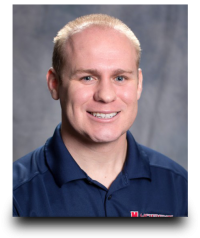Tennis Elbow
Temecula – Tennis Elbow Treatment
Fixing Tennis Elbow (Lateral Epicondylitis) with ART®
Lateral Epicondylitis, also known as “Tennis Elbow,” can affect anyone. It is not limited to tennis players or cashiers at your grocery store, but it also is extremely prevalent in golfers and computer workers. The condition is characterized as a sharp, throbbing pain on the outer part of the elbow, which is aggravated by repetitive usage of the fingers or elbows. Many times it is accompanied by a loss of grip strength.
What causes Tennis Elbow in working populations?
In the working population, tennis elbow is caused by a repetitive force (such as typing or gripping) applied at the common origin of the extensors of the forearm. When constant tension is applied to the common tendon, eventually there is a build-up of scar tissue and inflammation. This is the beginning of the “Cumulative Injury Cycle”, which eventually brings more pain and inflammation.
What causes elbow pain in golfers?
Although the name leads you to think that tennis elbow is more common in tennis players, it is actually very prevalent in golfers. It occurs often on the leading arm of a golfer’s swings when they have excessive elbow supination on the follow through. This often develops secondary to another injury causing a lack of motion in surrounding joints such as the shoulder. Often correction of tennis elbow in golfers requires manual therapy to remove scar tissue and instruction by a swing instructor to correct bad habits formed over the duration of the injury.
What are some treatments for Tennis Elbow?
Non-steroidal Anti-inflammatory Medications (NSAIDs)
Some common over the counter medication for Tennis Elbow are: Aspirin, Aleve, Motrin and Advil. Generally these drugs are fine for short-term reduction of pain and inflammation, but when used for long periods of time can cause severe side effects. The evidence on the effectiveness of NSAIDs is conflicting; some say there is a significant difference and other studies show they are no different from a sugar pill.1,4 Some common side effects are: peptic ulcers, hemorrhage, perforation, and abdominal pain. In fact, in 1998 it was estimated that 15 – 35% of all peptic ulcer complications were directly related to NSAID use.5
Corticosteroid Injections
Corticosteroid injections have been found to be more effective over a four-week period than the use of NSAIDs in tennis elbow patients.1,4 Majority of short-term studies have shown the use of injections to be superior to NSAIDs. However, corticosteroid injections have been found to have minimal effectiveness after six weeks. Majority of the effect is seen in the first two weeks. 7 This type of therapy is not without its risks either. Some possible side effects are thinning of cartilage (if injected into the joint space), weakening of the soft tissues surrounding the joint, and possible infection.
Elbow Braces
Despite their widespread and popular usage, many different studies have failed to find the benefit correlated with elbow braces.1,2,7 Braces have been found to increase the patient’s ability to work with tennis elbow, but when compared with the effects of injections, the injections were much more effective. A study even compared the effects of “real” braces to “phony” braces; the patients in the study actually found no difference between either brace. 2,8 If the patients can’t tell the difference between a real brace and a headband tied around their forearm, you might want to reconsider this type of treatment.
Tennis Elbow Surgery
Surgery is considered as a last resort for Tennis Elbow, in fact it is only considered after 6 – 12 months of unsuccessful non-surgical treatments. A popular method is called a lateral epicondyle release surgery. This is where the tendon is cut away from the bone, scar tissue is removed from the tendon and it is then connected to nearby fascia. Bone spurs are also taken out if they are found in the area. All surgeries should be considered as a last resort in any musculoskeletal injury. As of 2002, the Cochrane Review concluded there are no concrete randomized control trials to validate any effectiveness of this surgery.
How can Active Release Techniques® (ART®) fix Tennis Elbow?
Active Release Techniques® is an extremely effective method of decreasing tension of the muscles of the forearm and the elbow leading to an overall decrease in tension and inflammation on the tendons of these muscles. As stated before, the inflammation is a direct result of an accumulation of scar tissue within the involved structures. ART® breaks the “Cumulative Trauma Cycle” and fixes Tennis Elbow fast, without medications, injections, braces and surgery.
Tennis Elbow or Lateral Epicondylitis is considered an overuse injury of the upper extremity and this is just the type of injury that responses favorably to ART®. In September 1999, a study was published in The Journal of Occupational Rehabilitation regarding the effectiveness of ART® with cumulative trauma disorder cases of the upper extremity. An ART® provider, with only six months experience, was asked to treat 28 patients with epicondylitis, carpal tunnel, and tendonitis. All of the patients had tried medical treatment prior to the study with limited results. Results of the study revealed a 71% improvement rate within one to three months of treatment. 6 ART® has been found to be a very effective treatment of cumulative trauma disorders and it is also one that is least known.
Do yourself a favor and give Active Release Techniques® a try. You will more than likely feel a significant change in your symptoms within 3 – 4 treatments. ART® is that effective!
Stop living with tennis elbow pain and not performing at your best. Contact your Temecula Chiropractor Dr. Horst today!

Meet Dr. Horst
I am a true believer in the power of Chiropractic. I believe that the power that made the body can heal the body without the use of drugs.
Need Pain Relief?
Contact Us Today
To schedule an appointment
Call: 951-693-2208
– or –
Read What People
Are Saying About Us
Are Saying About Us

